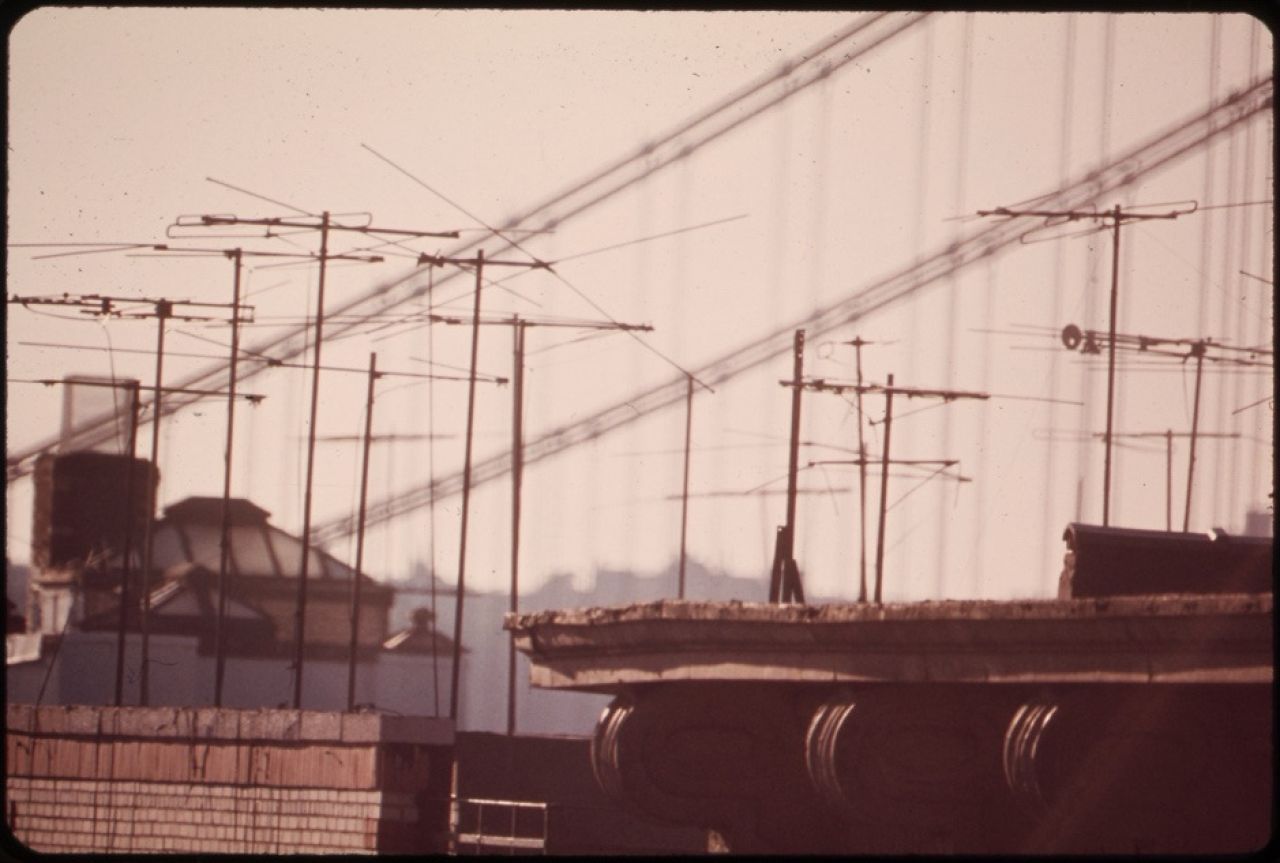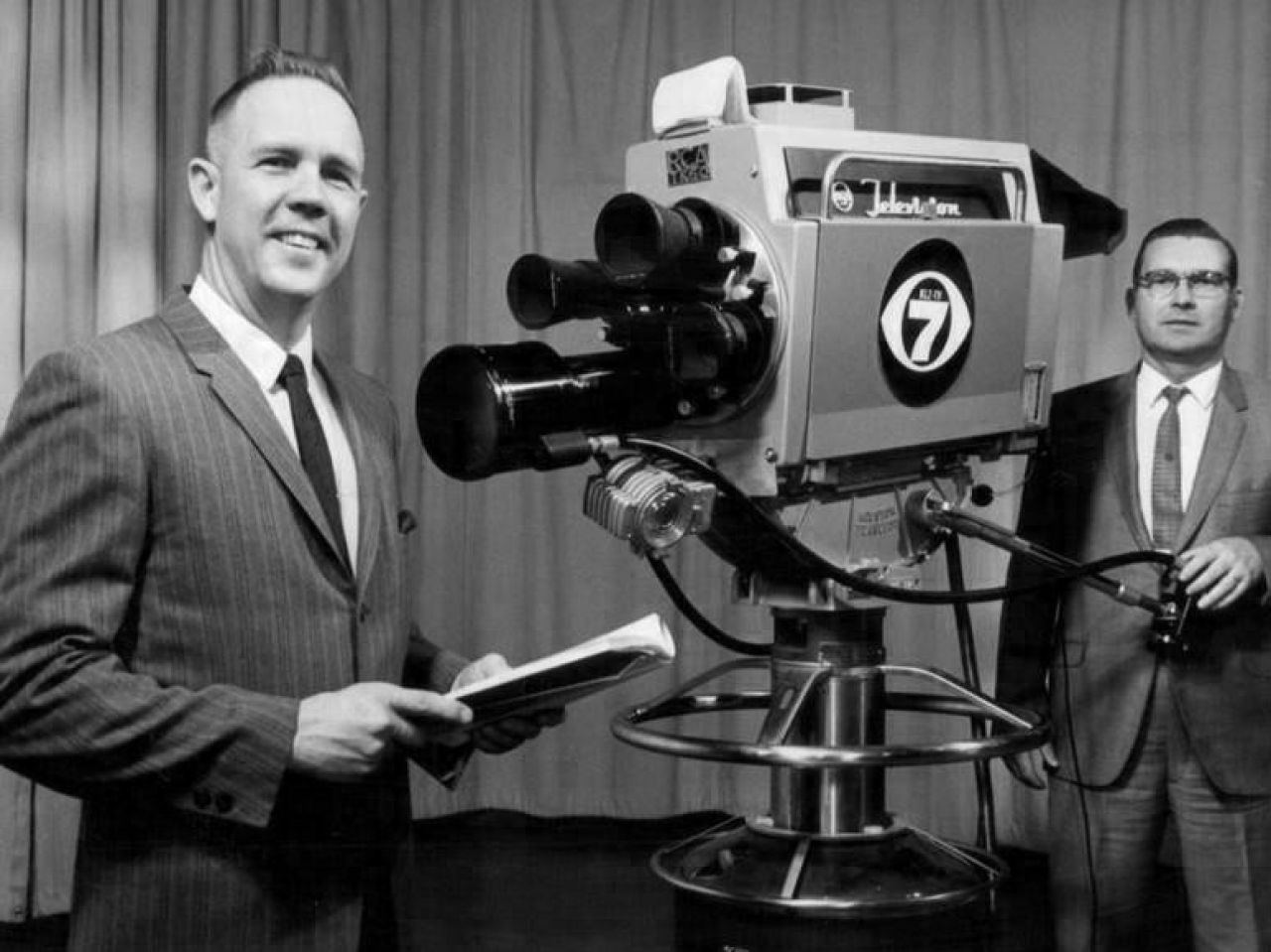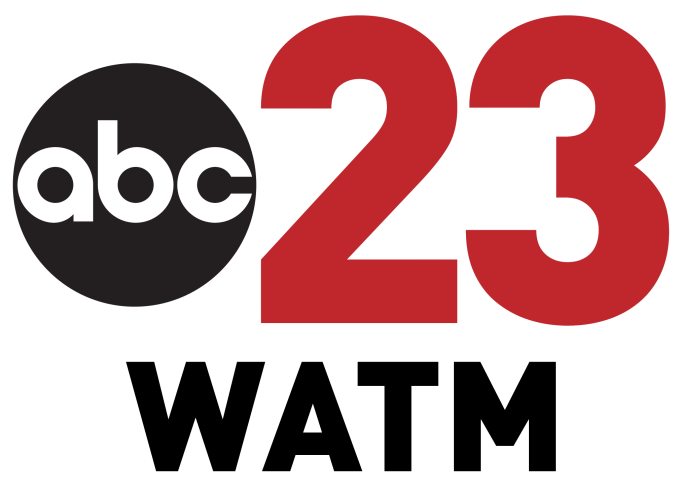July 10, 2024
The news behind your local TV news

Here at the News Literacy Initiative, we’ve been trying to stress the importance of good local news for democracy. Over the last decade, the number of local newspapers in America have shrunk dramatically, meaning that citizens living outside major metropolitan areas have less information on what is going right and wrong in their communities. On News Over Noise, we’ve talked about news deserts expanding as conglomerates and hedge funds bought up trusted local brands and bled them dry. More often than not today, the owners of the local newspaper have little connection to the community on the masthead and have replaced local beat reporters with national syndicated news. The lights may still be on, but there are fewer and fewer reporters writing about what’s going on at home.
This sad state of affairs isn’t just a problem for print journalism, the same thing has happened to local TV news, which has long ranked near the top as the place where most citizens in America get their news.

Rooftop antennae receive television transmissions in June 1973.
Credit: National ArchivesDuring the early days of television, the analog broadcast signal had a limited range, so the big media companies like ABC, NBC, CBS and DuMont created networks of local affiliates to broadcast content from coast to coast. Those affiliates were granted license over part of the spectrum – a channel – which they used to broadcast local and national content out to houses with TV antennas on their roofs.
During the second half of the 20th Century, local populations increasingly turned to local TV news shows produced by these affiliates to find out about what was going on in their communities. What’s the weather going to be? How did the high school baseball team do? What’s the local government up to? When people saw news content like this about their own communities produced by people who lived in those communities, they came to trust these local news organizations, which is why year after year people indicate that they trust them more than national news organizations.

But things started to change towards the end of the 20th century as TV antennas were replaced by cables and analog signals became digital. Rules put in place by the FCC to preserve diversity of opinion by limiting the number of TV stations that could be owned in any given media market were loosened. Now able to buy up stations across the nation, these media conglomerates kept the ABC, CBS and NBC brand affiliations that people knew and trusted while hiding the identity of their ever-changing owners.
Over the past two decades, one of the biggest beneficiaries of this lax regulatory structure has been Sinclair Broadcasting Group, which owns or operates 294 local TV stations in 89 media markets.

In the central PA media market serving Penn State’s University Park, Dubois and Altoona campuses, Sinclair operates 3 out of 4 local stations, using its “sidecar” company, Cunningham Broadcasting Group, to skirt FCC limits on local ownership: WJAC, WWCP and WATM. Sinclair also owns WHP in Harrisburg, meaning that if you live in central or south-central PA, it’s more likely than not that your local news is operated by Sinclair and that the content on each is going to be remarkably similar.
Sinclair is not the biggest corporate owner of local TV stations (Nexstar is, owning hundreds of stations in 116 media markets, including WTAJ TV in Altoona), but it has gained notoriety over the last several years by brazenly inserting the partisan political talking points favored by its owners into local news broadcasts. It requires local stations to air “must-run” news packages that have almost no local news value. The trend started in 2004, when Sinclair made news for firing a bureau chief who complained publicly about the Baltimore company forcing its stations to run a 45 minute anti-John Kerry propaganda. During the next decade, Sinclair injected its national politics into local news on multiple occasions. In 2016, the Trump campaign cut a deal with Sinclair that exchanged extensive access to Trump in return for positive coverage without fact-checking. That same year, Sinclair owner David D. Smith met with Trump and assured him, “We are here to deliver your message.” In a 2017 study, by Emory University, researchers found that stations acquired by Sinclair increased their coverage of national news by 25% while decreasing the amount local reporting the produced.
John Oliver brought the problem to national attention in 2017, exposing how Sinclair forced local stations to run ready-made political commentary segments featuring Trump advisor Boris Epshteyn and Sinclair Vice President Mark Hyman, thereby seeding local news broadcasts with national culture war talking points. PBS also did extensive reporting on the dangerous implications of Sinclair’s national activism for local news.
But it was a mashup produced by Deadspin of different stations reading the same “must-run” news packages—nationally produced scripts that the local news anchors have to launder—that parroted and amplified then-President Trump’s frame about non-partisan journalism being fake news that really helped expose the problem.
Certainly there are plenty of conservative national broadcasting companies like Fox News, OAN and Newsmax that prioritize partisan frames and divisive content in their programming because their internal data suggests that their audiences respond to it. But among the various corporations whose business model is buying out local TV news organizations and paring them down to streamline costs, only Sinclair forces the local anchors to run partisan national news packages.
Last month, Sinclair made news once again as it got caught pushing more of its national partisan talking points onto local audiences. This time, they forced local anchors to read a script that amplified a dubiously sourced piece in the Wall Street Journal about President Biden’s mental acuity, and framed the issue as one that could decide the election.
And while Joe Biden’s sharpness may be a national news story—one that owing to the feedback loop whereby journalists tend to report what others in their industry are reporting may indeed decide the national election—it is decidedly not local news, which is more to the point.
As local independent print, radio and television news organizations have been bought and squeezed for profit by national media conglomerates like Sinclair, the local context and flavor that once drew in readers, listeners and viewers has waned. People still trust local news producers more than other news organizations, but the the variety of opinion and perspective that was once the strength of a diverse local news ecosystem has been flattened, replaced by stories that are increasingly unrelated to the lived experience of local communities. As national partisan cues get noisier and more common on local TV news, the local context that promotes a non-partisan sense of belonging and shared investment in community gets harder to hear. Those of us who see robust local news as crucial to local democracy and participation in civil society view this as a dangerous trend.
So, the next time you tune in to your local TV news to get the weather and end up getting subjected to a blast of partisan hot air, look and see who owns the local affiliate you’re watching. If you’re regularly getting exposed to national partisan hot takes, chances are that Sinclair Broadcasting is pushing its agenda under the cover of your trusted local brand.




